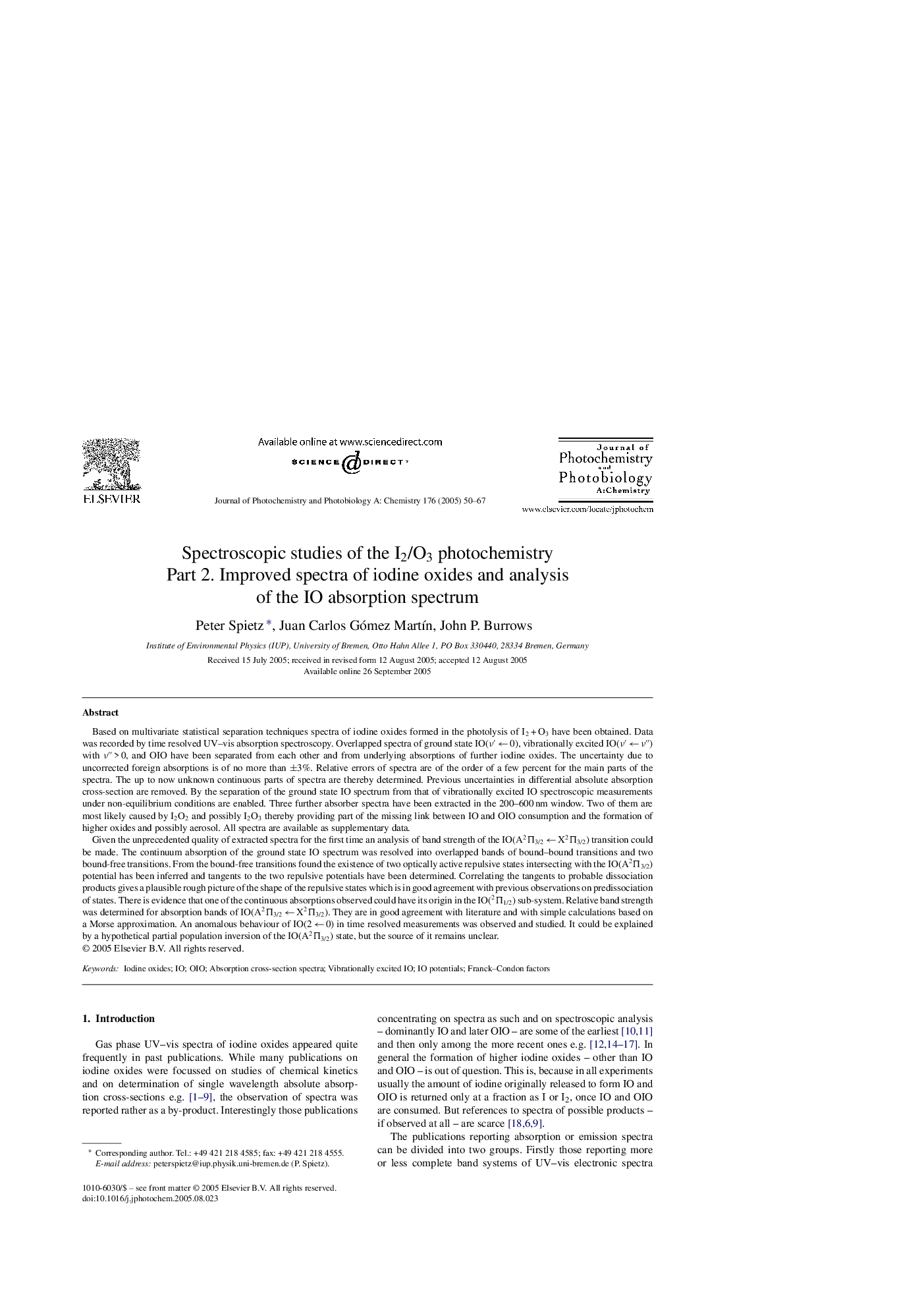| Article ID | Journal | Published Year | Pages | File Type |
|---|---|---|---|---|
| 9605431 | Journal of Photochemistry and Photobiology A: Chemistry | 2005 | 18 Pages |
Abstract
Given the unprecedented quality of extracted spectra for the first time an analysis of band strength of the IO(A2Î 3/2 â X2Î 3/2) transition could be made. The continuum absorption of the ground state IO spectrum was resolved into overlapped bands of bound-bound transitions and two bound-free transitions. From the bound-free transitions found the existence of two optically active repulsive states intersecting with the IO(A2Î 3/2) potential has been inferred and tangents to the two repulsive potentials have been determined. Correlating the tangents to probable dissociation products gives a plausible rough picture of the shape of the repulsive states which is in good agreement with previous observations on predissociation of states. There is evidence that one of the continuous absorptions observed could have its origin in the IO(2Î 1/2) sub-system. Relative band strength was determined for absorption bands of IO(A2Î 3/2 â X2Î 3/2). They are in good agreement with literature and with simple calculations based on a Morse approximation. An anomalous behaviour of IO(2 â 0) in time resolved measurements was observed and studied. It could be explained by a hypothetical partial population inversion of the IO(A2Î 3/2) state, but the source of it remains unclear.
Related Topics
Physical Sciences and Engineering
Chemical Engineering
Bioengineering
Authors
Peter Spietz, Juan Carlos Gómez MartÃn, John P. Burrows,
